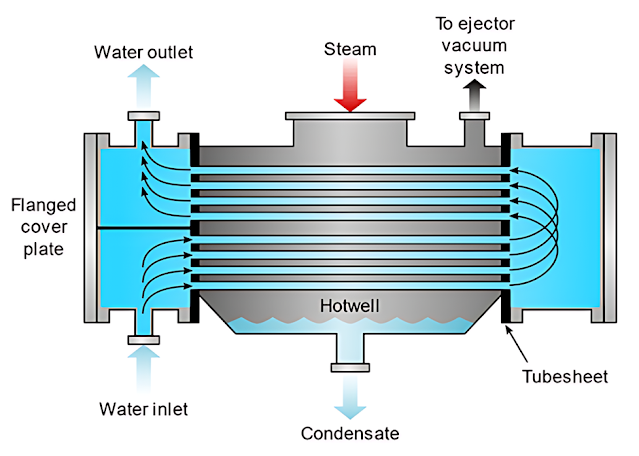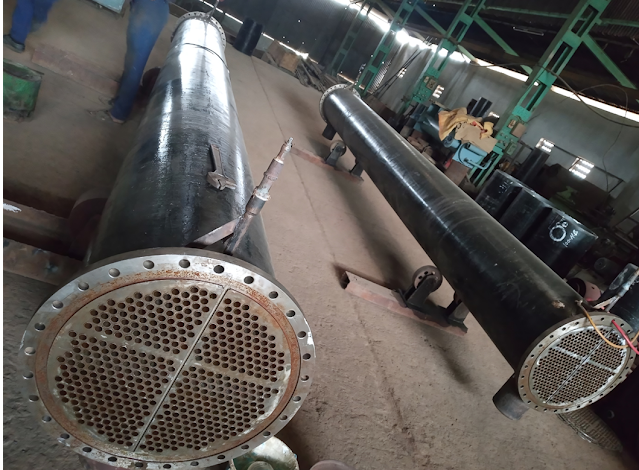Heat Exchangers Specific Applications and General Maintenance

Heat exchangers Specific Applications and General Maintenance. The heat exchangers we have seen up to now have all been used to heat, a process liquid in some instances. However, the purpose of heat exchange is to remove heat from a fluid that requires cooling. Suppose we wanted to convert steam generated by one process into feed water for another process. To do this a shell and tube exchanger can be used as a condenser. This cutaway will show how the condenser works. Water enters the space between the head of the shell and the adjacent tube sheet and flows through the tubes to the opposite end. Steam enters at the top of the shell and flows down and between the condenser's tubes. When the steam is cooled it condenses to water and falls into the hot well at the bottom of the condenser. Air also may be used to cool steam. Here a fan blows air across tubes that carry steam. Although not as efficient as water the air absorbs heat from the steam and the steam conden


.jpg)